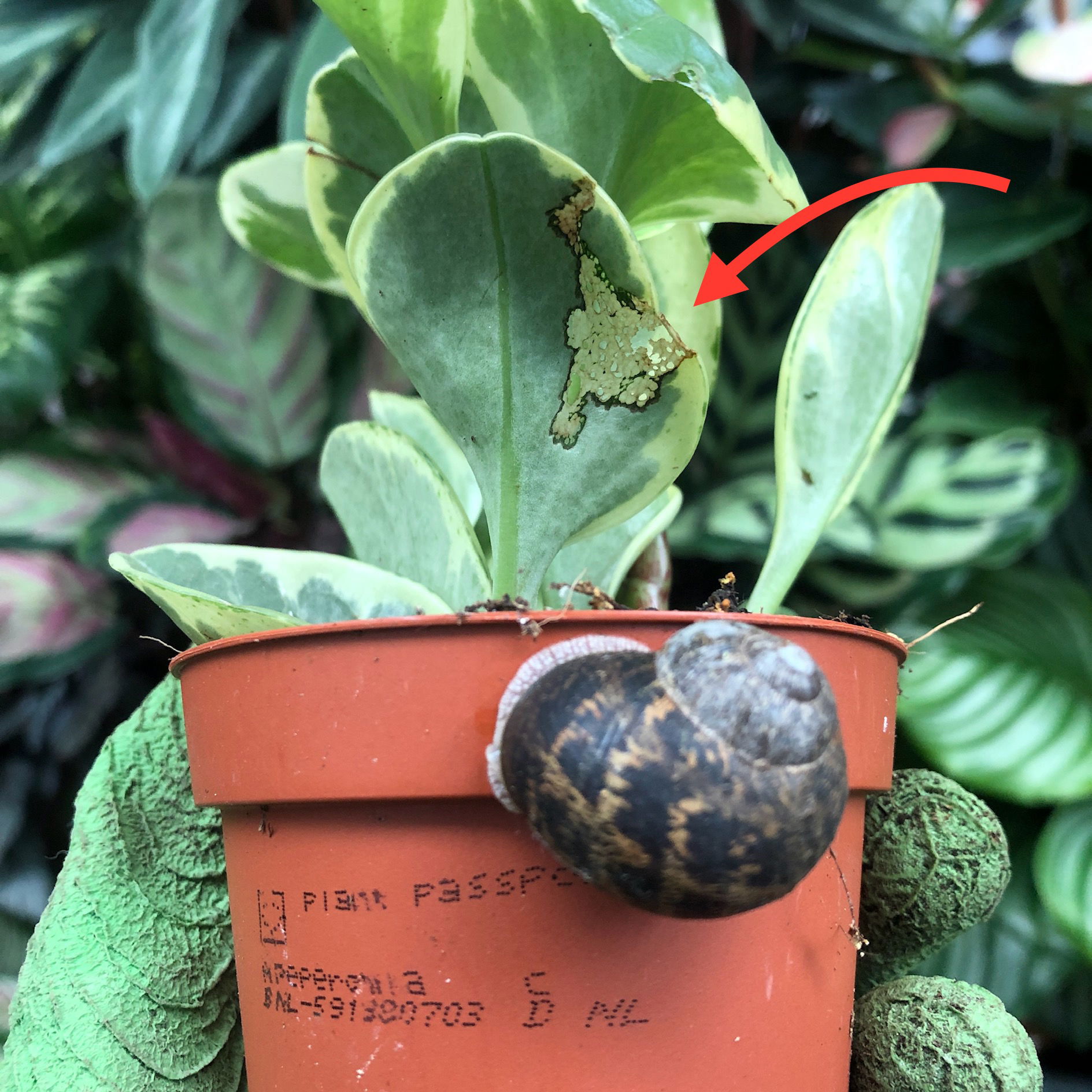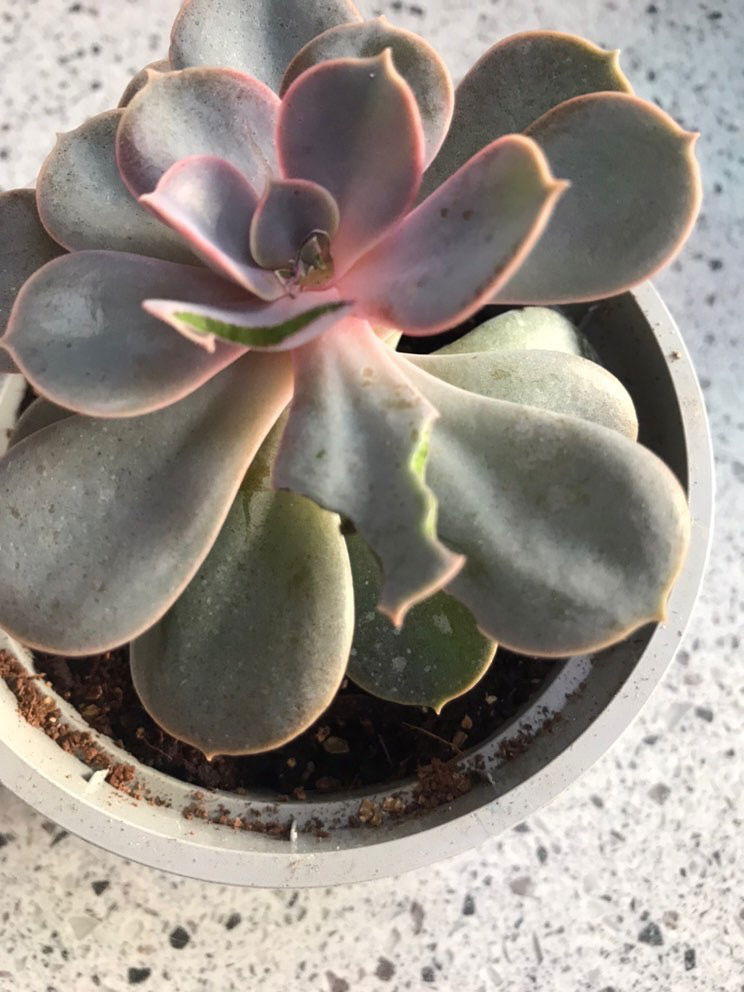Copyright: Wikipests
Contents
- Top Tips & Info
- Symptoms
- Susceptible Parts
- Actions Needed & Recommended Products
- Ways to Prevent an Attack in the Future
Need the answer to a specific plant or pest query? Book a 1-to-1 video call with THE HOUSEPLANT DOCTOR™, the website's friendly author, to overcome and address your niggling problem! Available on iMessage, WhatsApp, Facebook Messenger & more.
Top Tips & Info
- Eradication Difficulty - Easy
- Life Cycle: Snails up to 3 Years & Slugs up to 6 Years.
- The female Snail can lay up to seventy eggs in her lifetime, whereas a female Slug can lay around thirty. Most eggs are deposited just below the soil line and resemble white circular balls.
- Snails & Slugs can be brought onto a plant by two methods, either by being near an open window or during a short period outside during the spring or summer.
- Small pests may go unnoticed for the first few weeks, but small circular bite marks will appear along the leaves in due course.
- To eradicate an attack, take the plant outside and look around the entire foliage and pot. Check under its leaves, along the stems and around the pot. In some cases, the Snail or Slug will move onto other surfaces nearby to the plant's indoor location, so it's essential to be vigilant when addressing an attack.
- These pests are most active at night, or during a rainy spell, and are more likely to travel indoors during this time (to your houseplants).
What are the Symptoms of Slugs & Snails on my Houseplants?
Small circular bite marks will develop along the foliage on the unfortunate plant. After a short period, the affected leaf will become yellow or brown and warrant it useless. Prune off the seriously affected foliage to improve the growing conditions. You may also see the iconic slime trails as the pest travels across the plant, and possibly onto nearby specimens.
They are also known to eat the basal structures of tubers, small rhizomes and even corms. With your finger, move the soil that's next to the plant's base to see if it is under attack. If so, take the specimen outside and replace the top two inches with a fresh batch of the appropriate potting mix ('Houseplant' compost for tropical plants, 'Cactus & Succulent' compost for arid-dwellers, and so on). Keep an eye out for a potential relapse within the oncoming weeks by checking the plant's base for further damage.
 Typical damaged of a snail on a Peperomia.
Typical damaged of a snail on a Peperomia.
 Slug damage sometimes looks similar to 'teeth marks' as seen on this Echeveria.
Slug damage sometimes looks similar to 'teeth marks' as seen on this Echeveria.
What are the most Susceptible Houseplants & Where do Slugs & Snails live on them?
Most areas above the soil line will be susceptible to Snails & Slugs, including its basal structure like corms, tubers and rhizomes. Stemmed plants are more likely to house an attack on solely its foliage. The Slugs and Snails may live on the pot itself (out of sight), or will travel up to 5m (14ft) away either outside or still indoors.
Plants - All houseplants are tolerable to Snails & Slugs, including Elephant Ears, Indoor Herbs, Monstera & Succulents.
What are the Actions Needed to Eradicate a Slug or Snail Attack on Houseplants?
1. Pick off any visible bugs with gloves, keeping them in a container as they may slowly escape. When returning them to the outdoors (either in the garden or via woodlands), never relocate them near tender plants (like Hostas) that are intolerable to dealing with a potential attack. This will only further cause damage to your ornamentals, whether they're indoors or out.
2. Take the plant outside, GENTLY rinsing the stem, leaves, and each cubbyhole using an outdoor hose. It's important to spray the water in at least three different angles to ensure all Snails or Slugs fall off!
3. Scan the plant for any more signs of Snails or Slugs before bringing it back indoors. It'll be good to check all of your other plants in case a few escapees have taken refuge elsewhere!
Extra Tip: If you're still worried your plants might be at risk of further Slug or Snail damage, you can try boiling 1L of water with one garlic clove for around fifteen minutes. Once cooled, spray both sides of the leaves (and the pot) which will put-off any hungry herbivores. You can repeat this step once a fortnight, but usually by the third application the pests have got the message.
Recommended Products
Andermatt NemaSlug is a flour-like substance that can be mixed with water and poured into the soil (when the plant needs another drink). The nematodes are invisible microscopic organisms that'll hunt and kill Slugs or Snails that may be 'sat' or 'sleeping' on the soil. You can get 15% off this product via this like with code 'JOE15'.
Slug Stoppa can be sprayed on the foliage to protect the upper portion of the houseplant (above the soil line). You can use this product once a fortnight but usually one application for a houseplant is needed, especially when its foliage is never wetted or misted.
What are the Best Ways to Prevent a Slug/Snail Attack in the Future on Houseplants?
At the local plant shop or garden centre, inspect the soil of any plants you wish to buy. Most attacks come from nearby windows or after being placed outdoors for a short while during the warmer months of the year. When placing your houseplant outdoors, it's crucial to regularly keep an eye on it every time it rains, especially at night when they're most active. All houseplants can be affected by Slugs or Snails.
Finally, store your bags of compost well by keeping them tight and enclosed, out of dry or damp areas. Never use soil that has been left outside for any length of time, due to the very high risk of contamination.
Book a 1-to-1 Consultation with THE HOUSEPLANT DOCTOR™
Need realtime advice for your Snail or Slug situation? Book a video or message consultation with expert Joe Bagley, THE HOUSEPLANT DOCTOR™ (author or ukhouseplants.com). Choose between a ten or thirty-minute session & a platform of your choice (WhatsApp, FaceTime, Facebook Messenger or Zoom). Ask unlimited questions in one session, including queries on your dying/challenging plants, pests eradication, terrariums, repotting advice & everything in between! Available worldwide.